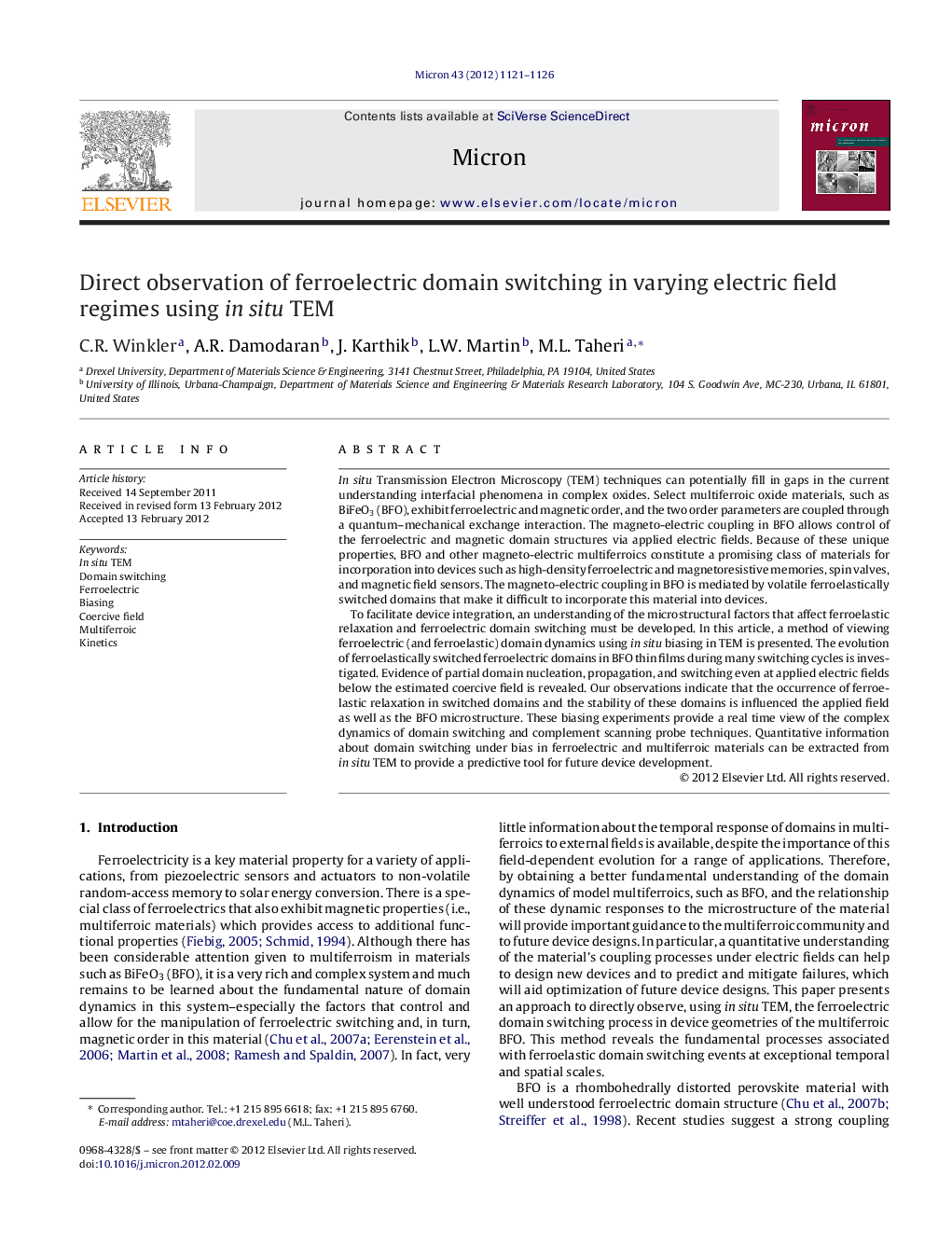| Article ID | Journal | Published Year | Pages | File Type |
|---|---|---|---|---|
| 1589154 | Micron | 2012 | 6 Pages |
In situ Transmission Electron Microscopy (TEM) techniques can potentially fill in gaps in the current understanding interfacial phenomena in complex oxides. Select multiferroic oxide materials, such as BiFeO3 (BFO), exhibit ferroelectric and magnetic order, and the two order parameters are coupled through a quantum–mechanical exchange interaction. The magneto-electric coupling in BFO allows control of the ferroelectric and magnetic domain structures via applied electric fields. Because of these unique properties, BFO and other magneto-electric multiferroics constitute a promising class of materials for incorporation into devices such as high-density ferroelectric and magnetoresistive memories, spin valves, and magnetic field sensors. The magneto-electric coupling in BFO is mediated by volatile ferroelastically switched domains that make it difficult to incorporate this material into devices.To facilitate device integration, an understanding of the microstructural factors that affect ferroelastic relaxation and ferroelectric domain switching must be developed. In this article, a method of viewing ferroelectric (and ferroelastic) domain dynamics using in situ biasing in TEM is presented. The evolution of ferroelastically switched ferroelectric domains in BFO thin films during many switching cycles is investigated. Evidence of partial domain nucleation, propagation, and switching even at applied electric fields below the estimated coercive field is revealed. Our observations indicate that the occurrence of ferroelastic relaxation in switched domains and the stability of these domains is influenced the applied field as well as the BFO microstructure. These biasing experiments provide a real time view of the complex dynamics of domain switching and complement scanning probe techniques. Quantitative information about domain switching under bias in ferroelectric and multiferroic materials can be extracted from in situ TEM to provide a predictive tool for future device development.
► We developed a method by which ferroelectric domains can be imaged in situ in real time. ► We examine effects of changing applied electric field on ferroelectric domain behavior. ► Quantitative domain kinetics information provides a view of device performance. ► Imaging domain dynamics provides new insight on device limitations in varying electric field.
